Tanya Preminger is an environmental artist and sculptor who also creates work in numerous other forms of media. In terms of contrast, Preminger’s work utilises this concept extraordinarily well, especially with the work Round Balance (2008).
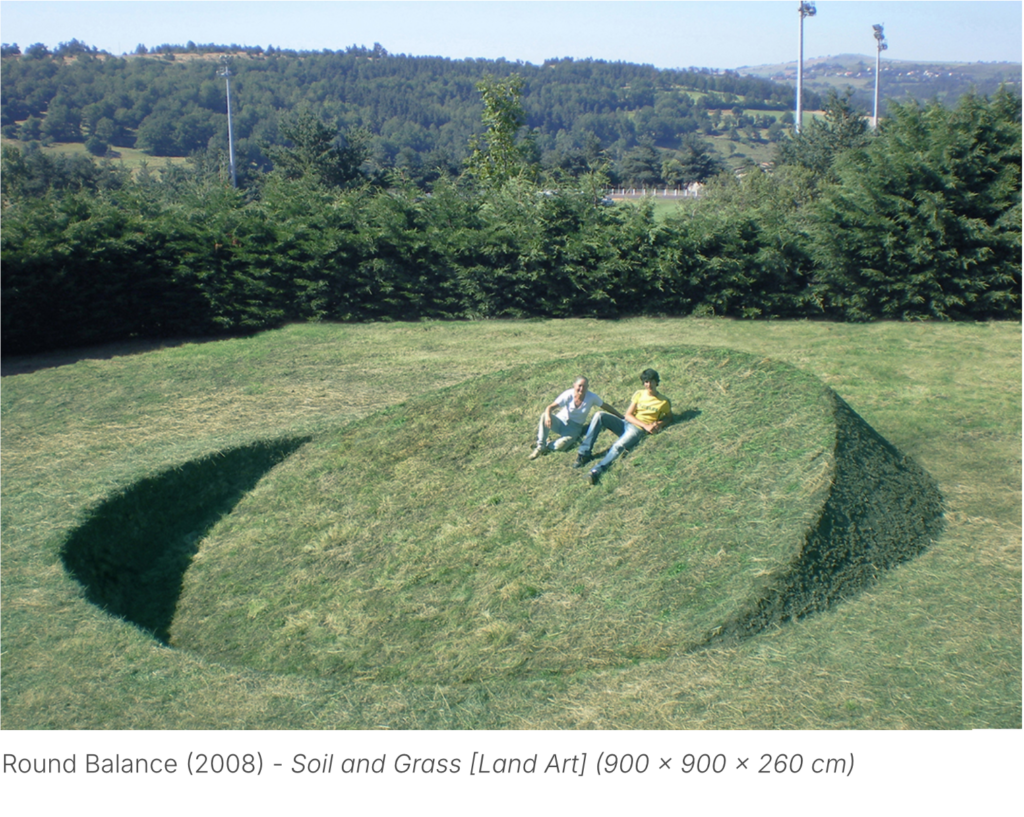
Round Balance (2008) is a minimalistic yet powerful land artwork. The work is a circular mound that seems inverted from the ground, creating a balance between what is inside the ground and what is above. The title, “Round Balance,” along with the form of the work, suggests a state of equilibrium.
Being a land artwork allows the viewer to become a participant and step into the artwork. As the artwork is meditative and encourages the balance of life- it becomes a space of reflection. As such, the juxtaposition and contrast of the soft and smooth grassy surfaces against the geometry of form embeds this state of equilibrium within it, as previously mentioned. Thus, this suggests the land itself, as a balance, as one side is higher than the other like a scale shows that when one side has more, the other side must have less.
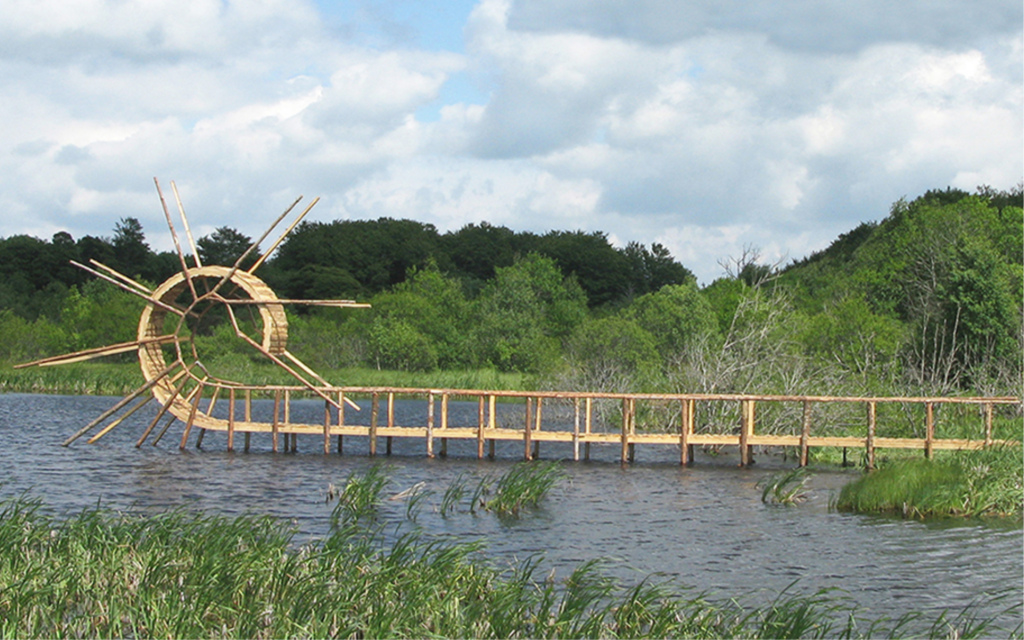
Back Flip Bridge (2009) is in extreme contrast to the land it is situated in; the spiral created from the bridge “backflipping” gives instant prominence to the work, being notable from both a distance and when in sight. This creates a contrast and juxtaposes what is artificial (the structure) and natural (the land) while also being of natural materiality.
The description of the work is “reality and fantasy”, from which we can imply that the bridge is no longer functional as its form exists in reality- however, its function is only used within fantasy. This brings us, the viewer, to imagine how to cross such a bridge within our minds- turning this into a meditative work. Furthermore, this idea is strengthened as the work is surrounded by water, allowing us to reflect. Rather than being a place that goes from one destination to another, it is a destination for our mind to rest.
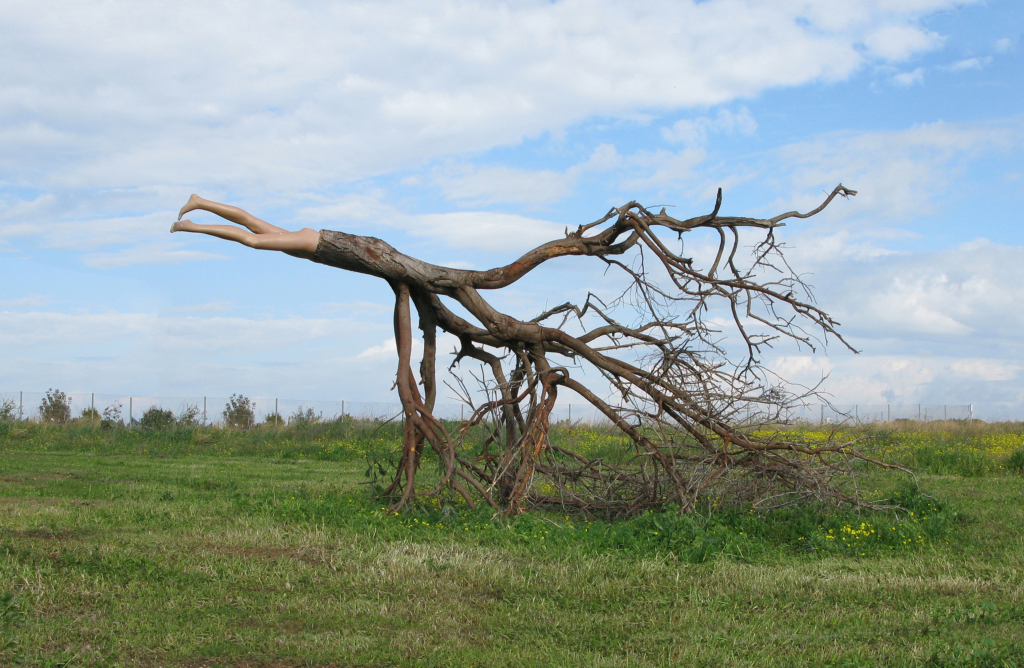
Understanding And Time to Displace (2009)’s description, “If you deprive him of his native land, roots, he dies”, positions the human figure as a part of the land- suggesting that life (symbolised by the tree) is reliant on the environment for survival. Displacement of the figure and the tree from the land has killed both; thus, killing the land will kill what lives on the land. The disconnection between humans and the Earth itself highlights the theme of environmental degradation and that if humanity continues to destroy the land they live upon- they will also die. To prevent this; humanity must care for the land and thus survive along with the environment.
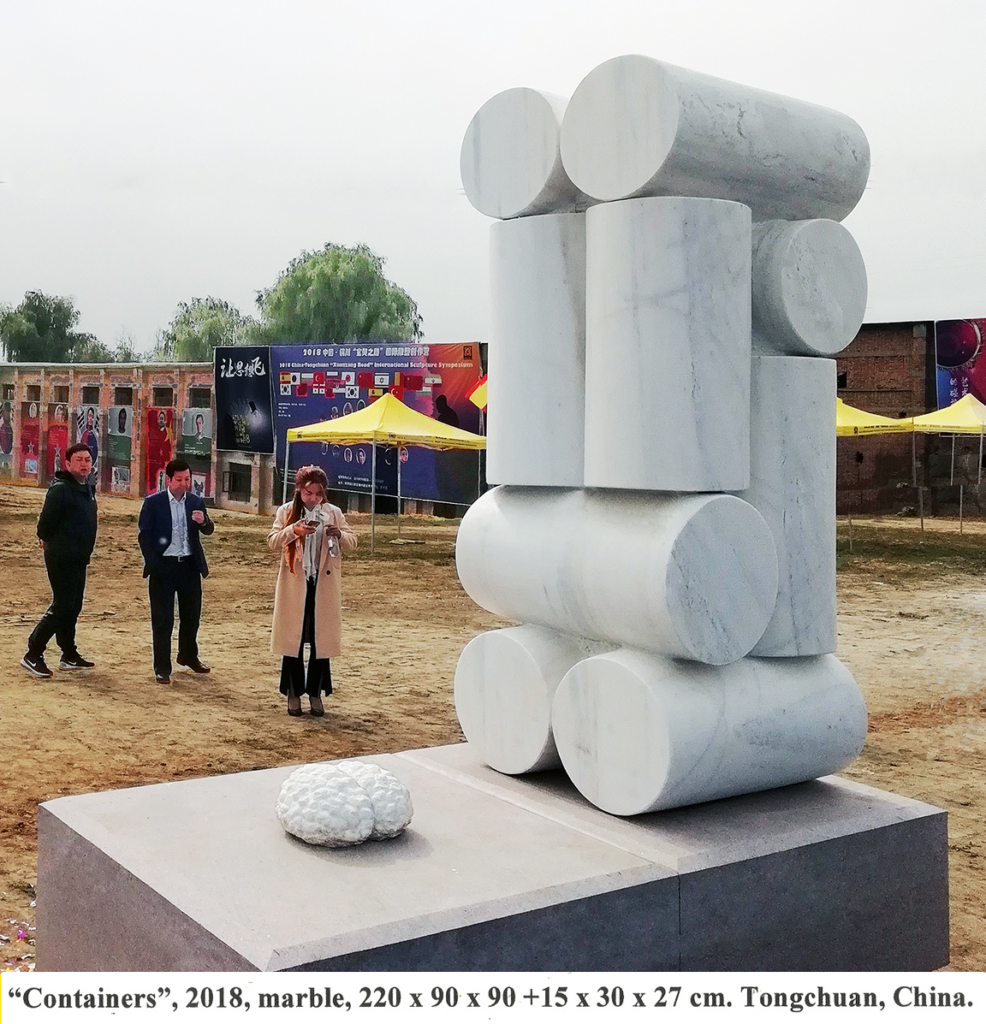
Containers (2018) is a uniform, minimalist sculpture with one part (the marble cylinders) against the brain, contrasting the organic and the artificial. The contrast is heightened as the form of the brain has many folds and ridges compared to the perfect smoothness of the cylinders. Furthermore, the polished and uniform surface is strong and presents a slight industrial appearance, while the brain’s wrinkles give a fragile appearance. The description of the work: “relationship of parts to the whole.” suggests that the brain and these cylinders (or containers) are interconnected. Therefore, within this context, we can discern that these cylinders may represent the vessels of our body that power the brain, and one cannot function without the other.
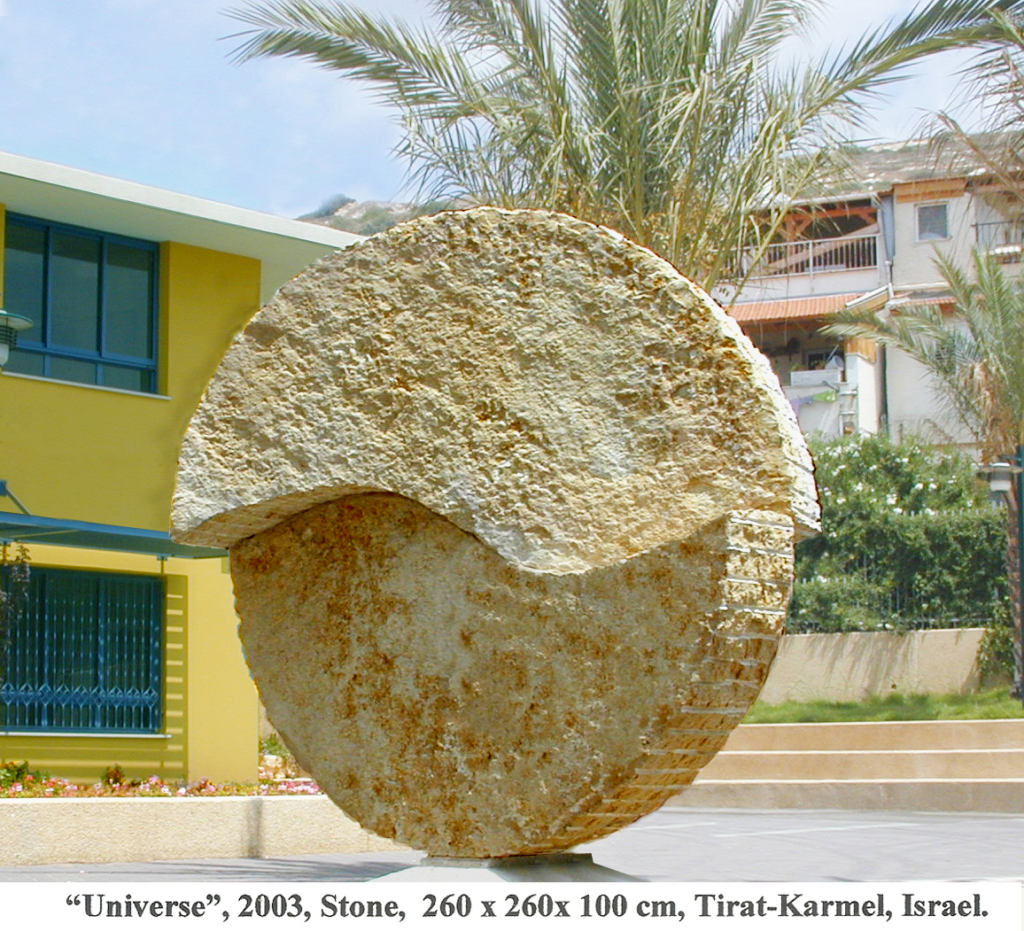
Universe (2003) is a stone sculpture with a rough-hewn surface that creates a natural appearance as though it has been eroded. Yet its form is sculpted from stone, thus creating a contrast between these elements. The stone sculpture is based on the concept of yin and yang—a duality of balance in that everything contains both yin and yang in a constantly changing balance.
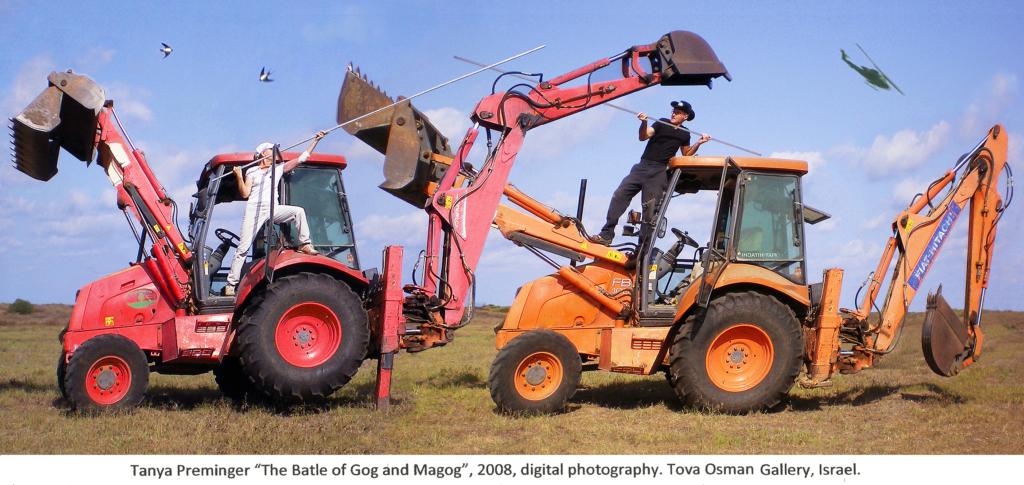
The Battle of Gog and Magog (2008) is an installation that reimagines the struggle between the sexes in a surrealistic way. It uses construction vehicles with two human performers enacting a fight with long (steel?) poles. The tractors within the work are not just background objects but active participants in the struggle. Thus, the battle of the sexes has been framed mechanically and absurdly, therefore serving as a humorous interpretation of the battle of the sexes.
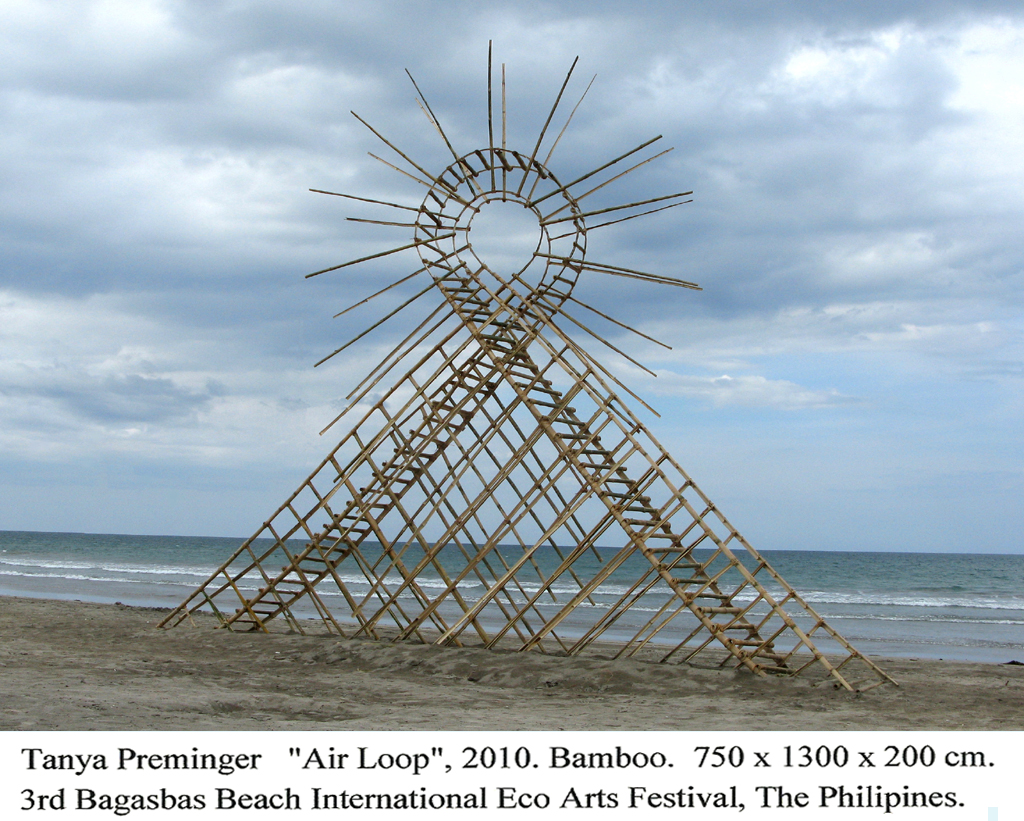
Air Loop (2010) is made from bamboo (which is biodegradable), allowing the sculpture to eventually become part of the land, especially in such an environment (near a beach) that it will erode it. This is more relevant when considering its description; “Life has two ends. First you go up – in the end, you roll down”, suggesting that you live and then die. In effect, this sculpture does the same due to its materiality mirroring the described rise and fall.
Interestingly, the loop in the sculpture is reminiscent of a sun or a halo, and the work’s form is a triangular pyramid shape that could be compared to the Renaissance triangular composition representing the ascent (or perhaps judgment in this case).
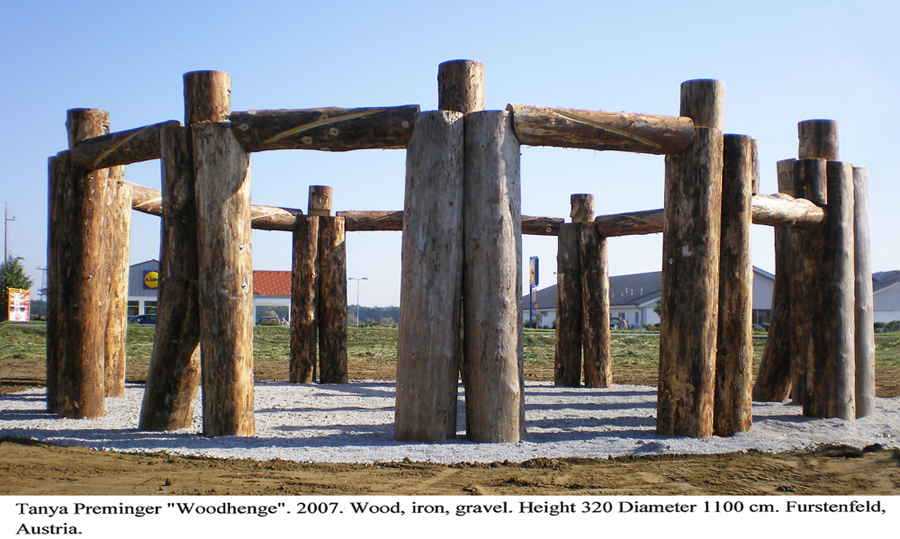
Woodhenge (2007) is a homage to the iconic heritage site Stonehenge (Salisbury, England, United Kingdom). This henge, however, has replaced the sarsens with wood, which seems to represent humans holding each other’s hands.
Using this representation of humans gives the work familiarity, and the circle of these humans explores a more communal experience. Using wood rather than stone gives the work a warmer quality, inviting the viewer to join the communal group and engage with the work. Wood also eventually degrades and becomes a part of this Earth; through the context of these images of humanity, we will go back to the Earth, too.
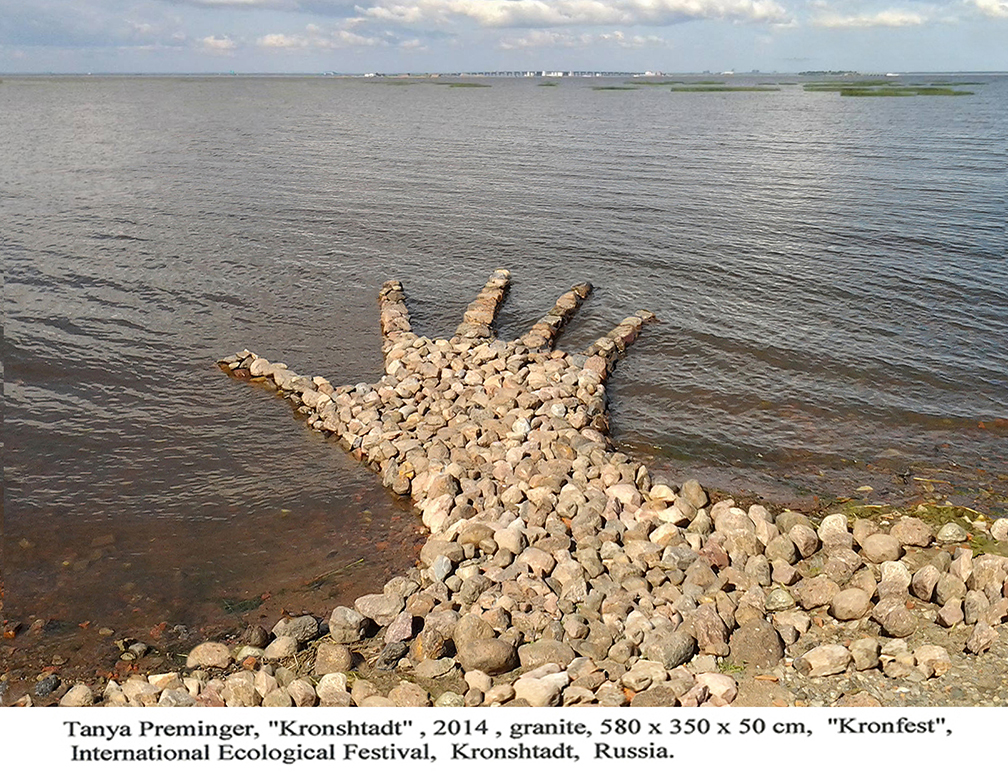
Kronstadt (2014) is a land artwork made from granite rocks; the artwork is a hand that reaches into the water. In context to its description, water eventually erodes stone while the stone initially prevents the water from getting to the other side. However, water rises at certain times of the day, which may cover the land art. Therefore, there is an everlasting confrontation of water against stone, symbolising the constant tension between growth and decay (erosion in this case), thus creating a balance between the two in light of the conflict of the elements.
With the hand potentially humanising the land artwork, we can also consider that the stone may represent humanity (and potentially our consequences on the environment). Water gives life to humanity; however, the stone (humanity) wants to control the life on this planet, which creates a battle between the Earth and humans.
However, by sculpting the hand into the water with granite (which inevitably erodes), the work may suggest that humanity’s control over the world is limited and vulnerable, as nature can change at any whim (water can be unpredictable). Forces that can change humanity’s control, which tie into water, could potentially be rising sea levels and climate change, forcing humanity to move and change.
Contextually, Kronstadt was created as part of the International Ecological Festival, which potentially confirms the more environmentally aware message this review has put forth.
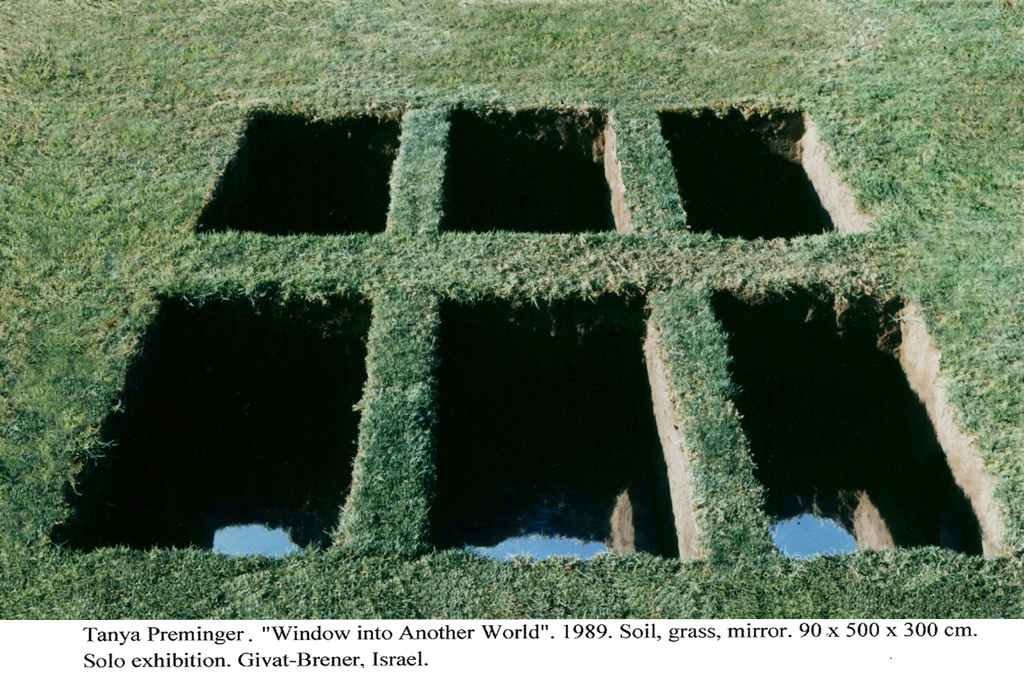
Window into Another World (1989) is an existentialistic work yet contemplative as it invites the viewer to reflect on death – where do we go after death? The land artwork consists of six rectangular cut-outs within the Earth framed by the grass. From the angle we can see in the photograph, there are mirrors placed at the bottom of these cut-outs. This, therefore, has created what may be an optical illusion that brings us into the mirror (which then serves as a gate to the next world (death)).
The title, Window into Another World, reflects the concept that death is simply a transition from one form of existence to another. Here, the window is more of a grave as it is dug into the ground, while the mirror serves as the glass of this grave. Using the land itself as a form of the work helps to enhance the concept of mortality within the work; the grass is often symbolised with life, while the soil is made up of decay and dead beings- something that all life will return to at the end.
The third element is the mirror, which points to the possibility of the potential afterlife as a separation between life and death. The mirrors may also serve as a meditative or reflective concept to the viewer, as the viewer will most likely be standing above the artwork—seeing themselves. They are then peering into their afterlife and thus are made to contemplate their own life within this world.
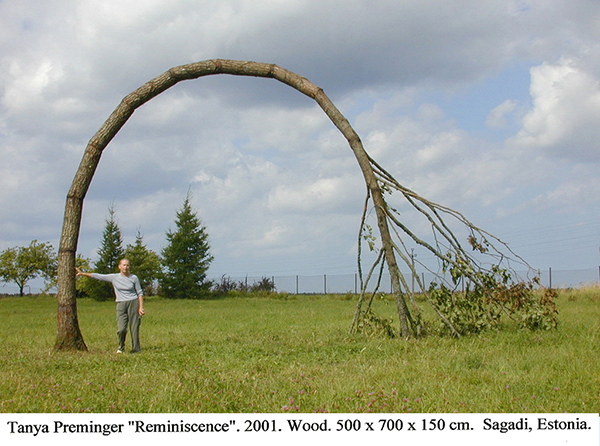
Reminiscence (2001) is conceptual in that it implies that all life is part of a neverending cycle. In this cycle, life starts from Earth, and one day, it will end, become part of the Earth once again, and feed new life. The land artwork contextualises this idea by using the tree from its root to the top of it being dug into the ground—the tree is, again, becoming part of the Earth.
The tree’s shape is a circle, which reinforces the idea that life is a cycle, while the title of the work, “Reminiscence,” suggests memory and the past. It is possible that the tree’s memories are one of the Earth’s, and through death, it is reminiscing its past. This is similar to what humans may experience when dying, in which we may see a flash of our own lives before death. Perhaps the tree is going through something similar.
There is symbolism in using the tree and in what the tree is composed of. It is composed of wood. Wood is a living material that eventually decays over time once its roots have been cut out (disregarding any artificial processes). This decay, itself, symbolises life to inevitable death, which then becomes soil or compost, which sprouts new life (and possibly creates a new tree in its place).
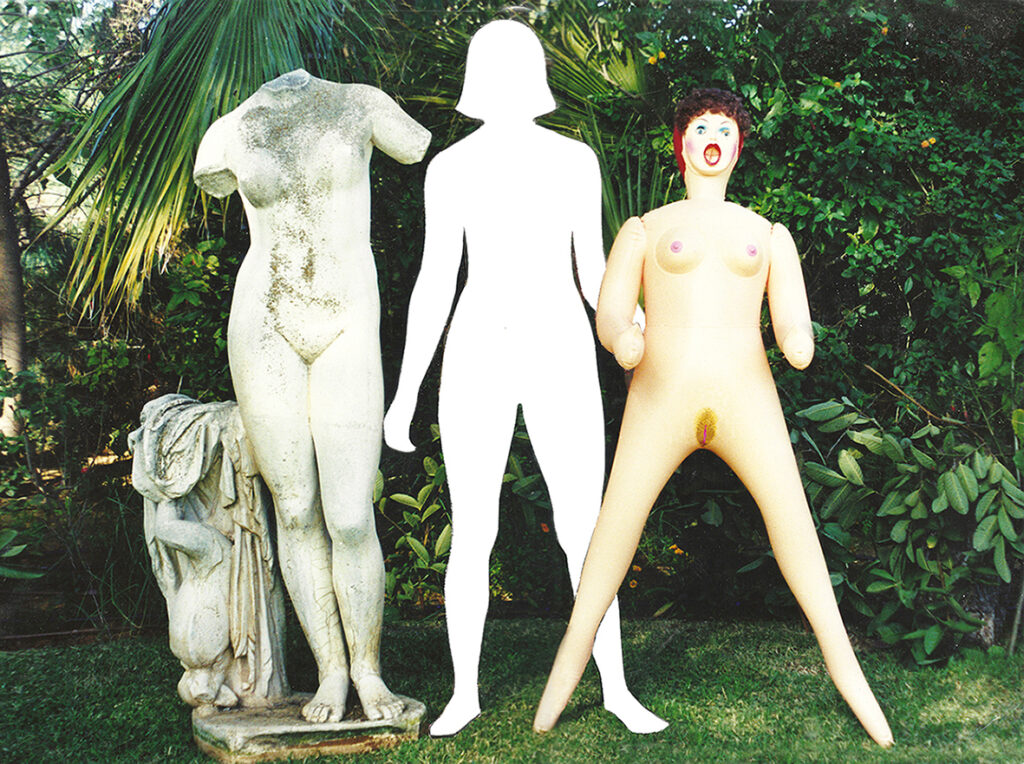
The Trinity (1998), which you can see through the title, represents the Holy Trinity to which the three figures are (from left to right): Venus (the Goddess of Love), Spirit (Man, Artist and Creator) and the last is a doll which symbolizes Love for Sale (sexual satisfaction).
The spirit (central figure) is a silhouette which allows anyone to be in the place of the empty figure.
